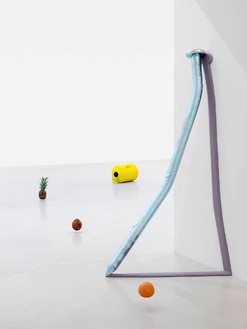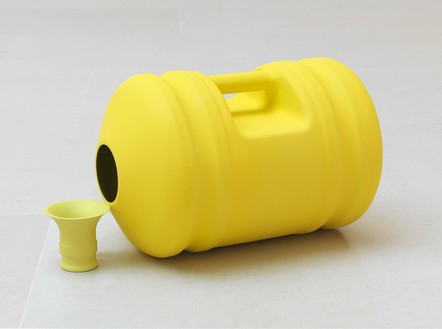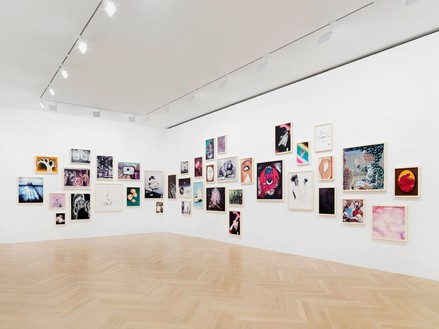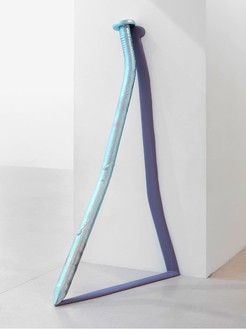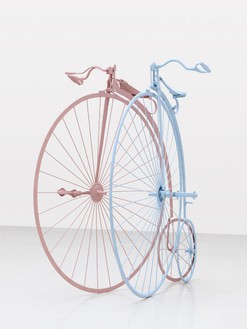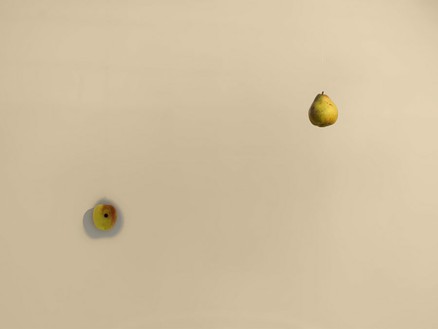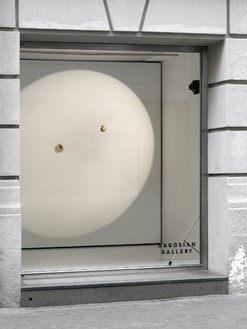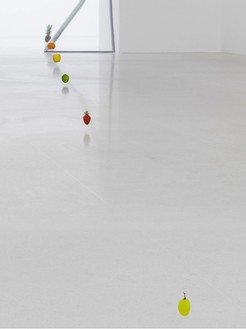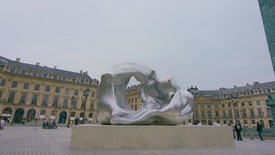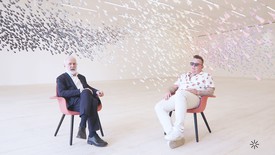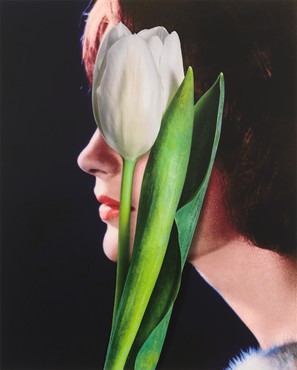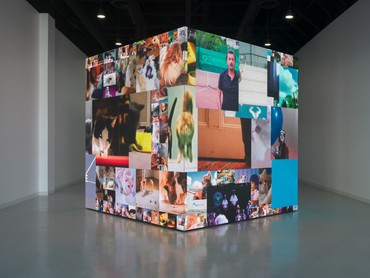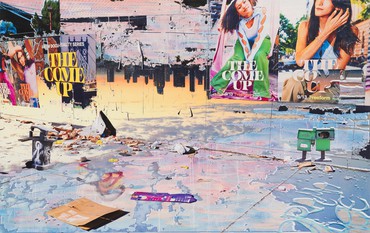About
Gagosian Paris is pleased to present an exhibition of new sculpture by Urs Fischer.
Fischer’s uncanny ability to envisage and produce objects on the brink of falling apart or undergoing psychic transformation has resulted in sculptures in a bewildering variety of materials, including unstable substances such as melting wax and rotting vegetables. Continuously searching for new sculptural problems to which he can provide solutions (or other problems), he has built houses out of bread; enlivened empty space with mechanistic jokes; deconstructed objects and then replicated them; and transferred others from three dimensions to two and back again via photographic processes. Compacting the real with the mimetic, the thing with the view, he combines daring formal adventures in space, scale, and material with a mordant sense of humor.
In recent times, Fischer has been exploring the genres of classical art history (still life, portraiture, the nude, landscape) at the intersection with everyday life—in cast sculptures and assemblages, paintings, digital montages, spatial installations, and mutating or kinetic objects—to create an alternate reality that is as sculptural as it is artificial. The German term schmutz means “dirt.” In Swiss German, Fischer’s native tongue, it also means “kiss.” Doubling the term creates a lewd image and an apt analogy for an exhibition that approaches the enduring “problems” of sculpture with an almost adolescent sense of erotic humor whose flipside is pure melancholy.
Firstly, Fischer works with the transformative potential of the cut, to diverse effect. A spindly penny farthing bicycle, slightly enlarged from life, has been sliced in two and splayed open, each half painted in an opposing pastel tone and balancing miraculously on its edge; a water bottle lying on its side, seems casually discarded were it not for the neat, perpendicular break at the neck, which also delineates the color shift from “ripe” to “unripe” tones of incongruous yellow.
A grouping of nails, cast in bronze with a dimly reflective surface and measuring the height of an average man, leans against the wall. Their long shadows, also cast in bronze but disguised in a delicate coat of mauve paint, run down the wall and across the floor, giving material form to an atmospheric phenomenon. Thirdly, Fischer employs real fruit as the medium for quasi-scientific postulations on time, scale, and infinity: an apple and a pear hang together in front of a spotlight, demonstrating an eclipse, while a larger taxonomy of organic matter, graded from largest (pineapple) to smallest (grape) and individually strung up to form an even line in mid-air, alludes to a larger planetary system. The fact of the fruit’s perishability further compounds the complexity of these light-handed yet profound sculptural meditations on mysteries that are as vast as they are imponderable.
Gagosian est heureuse d’annoncer une exposition de nouvelles sculptures d’Urs Fischer.
L’habilité déroutante de Fischer à imaginer et à produire des objets sur le point de s’effondrer ou ayant subi une transformation «psychique» a donné naissance à des sculptures aux matières d’une incroyable variété, allant de la cire jusqu’à l’utilisation de légumes avariés. Continuellement à la recherche de nouveaux enjeux en matière de sculpture auxquels il souhaite apporter une solution (ou y ajouter d’autres défis), il a construit des maisons avec du pain; a animé des espaces vides à l’aide d’objets mécaniques prêtant à la plaisanterie; a déconstruit des objets pour ensuite les dupliquer ; et en a transféré d’autres de la 3-D à la 2-D par l’utilisation de processus photographiques et vice et versa.
Condensant le réel et le mimétique, l’objet et son image, il réalise d’audacieuses associations formelles dont l’échelle, et le matériau témoignent d’un sens aigu de l’humour. Récemment, Fischer a exploré les genres chers à l’histoire de l’art classique (la nature morte, le portrait, le nu, le paysage) en les confrontant à la vie de tous les jours—à travers des sculptures et des moulages, des peintures, des montages numériques, des installations, et des objets cinétiques ou en mutation—afin de créer une réalité alternative autant sculpturale qu’artificielle.
Le terme allemand schmutz signifie «sale». En suisse-allemand, la langue maternelle de Fischer, cela signifie également «un bisou». La répétition du terme «schmutz» suggère une image obscène qui correspond à l’esprit de cette exposition qui évoque les «questions» éternelles de la sculpture avec un sens de l’humour presqu’adolescent et à la fois mélancolique.
Fischer travaille sur le potentiel de transformation de la coupe, et de ses divers résultats. Une frêle bicyclette, légèrement agrandie par rapport à sa taille réelle, coupée en deux et largement écartée, chaque moitié peinte dans des tonalités pastelles contrastées se balance miraculeusement sur ses extrémités ; une bouteille d’eau est allongée sur le sol, son goulot cassé nettement délimite deux tons de jaunes incongrus.
Un groupe de clous, coulés en bronze à la surface faiblement luisante et à taille humaine, repose contre le mur. Leurs ombres, également coulées dans le bronze, peintes en mauve, dégoulinent le long du mur et sur le sol, donnant ainsi une forme matérielle à un phénomène lumineux. Enfin, de véritables fruits sont utilisés en tant que médium et posent des postulats à visées scientifiques sur le temps, les échelles de taille et l’infini : une pomme et une poire suspendues ensemble devant une source de lumière, simulant une éclipse ; des fruits aux aspects divers, classés du plus grand (l’ananas) au plus petit (le raisin) individuellement suspendus pour former une ligne régulière symbolisent un système planétaire plus vaste. Le processus de pourriture des fruits intensifie la complexité de cette installation à la fois légère mais profonde, portant sur des mystères aussi immenses qu’impondérables.
Share
Artist
Urs Fischer: Wave
In this video, Urs Fischer elaborates on the creative process behind his public installation Wave, at Place Vendôme, Paris.
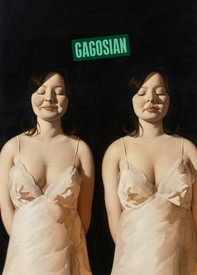
Now available
Gagosian Quarterly Winter 2022
The Winter 2022 issue of Gagosian Quarterly is now available, featuring Anna Weyant’s Two Eileens (2022) on its cover.
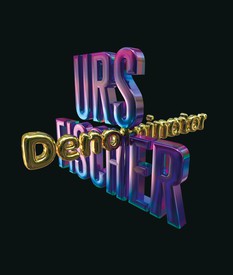
Urs Fischer: Denominator
Urs Fischer sits down with his friend the author and artist Eric Sanders to address the perfect viewer, the effects of marketing, and the limits of human understanding.
Urs Fischer: Lovers
The exhibition Urs Fischer: Lovers at Museo Jumex, Mexico City, brings together works from international public and private collections as well as from the artist’s own archive, alongside new pieces made especially for the exhibition. To mark this momentous twenty-year survey, the artist sits down with the exhibition’s curator, Francesco Bonami, to discuss the installation.
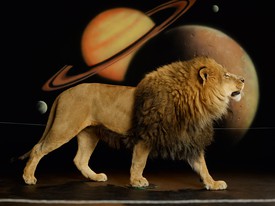
Awol Erizku and Urs Fischer: To Make That Next Move
On the eve of Awol Erizku’s exhibition in New York, he and Urs Fischer discuss what it means to be an image maker, the beauty of blurring genres, the fetishization of authorship, and their shared love for Los Angeles.
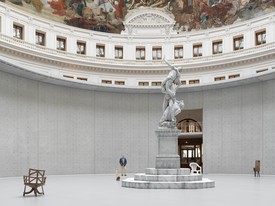
Bourse de Commerce
William Middleton traces the development of the new institution, examining the collaboration between the collector François Pinault and the architect Tadao Ando in revitalizing the historic space. Middleton also speaks with artists Tatiana Trouvé and Albert Oehlen about Pinault’s passion as a collector, and with the Bouroullec brothers, who created design features for the interiors and exteriors of the museum.
News
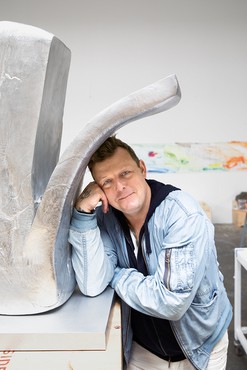
Artist Spotlight
Urs Fischer
June 24–30, 2020
Urs Fischer mines the potential of materials—from clay, steel, and paint to bread, dirt, and produce—to create works that disorient and bewilder. Through scale distortions, illusion, and the juxtaposition of common objects, his paintings, sculptures, photographs, and large-scale installations explore themes of perception and representation while maintaining a witty irreverence and mordant humor.
Photo: Chad Moore
